Drains can be very helpful in facilitating wound healing after tummy tuck surgery (known in the plastic surgery world as “abdominoplasty”). Many surgeons routinely place at least one drain during the procedure for two important reasons (as reviewed in one of our previous blogs): to protect against seroma and help the surgeon monitor the wound and ensure it is healing correctly. Please continue reading for in-depth illustrations of the role of drains in abdominoplasty recovery.
When performing a tummy tuck, the surgeon creates a large, “raw” surface. This area is twice the size of the diagramatic illustration on the left below (in pink). The image on the right diagrammatically illustrates the “front wall” and the “back wall” of the operative area. The “raw” surface area, which is relatively large, can create drainage inside the wound that can subsequently be removed by a drain.
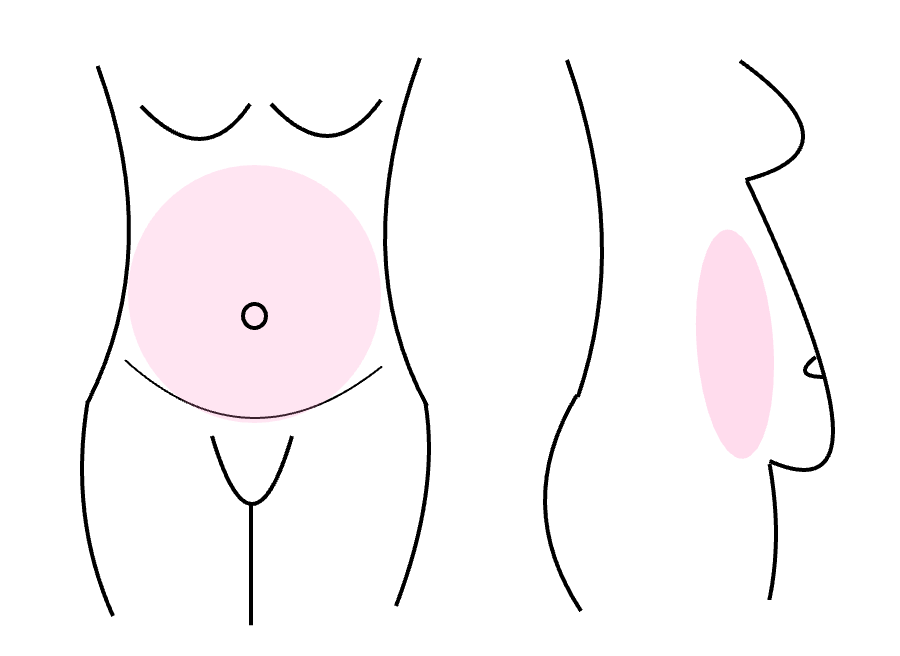
Many plastic surgeons will use a “closed” drain system consisting of three parts, as represented below. The bulb is used to create suction, collect fluid, and facilitate removal of drainage from the area of surgery, and the tubing is the conduit through which this drainage is removed. The drainage end remains inside the area of surgery.
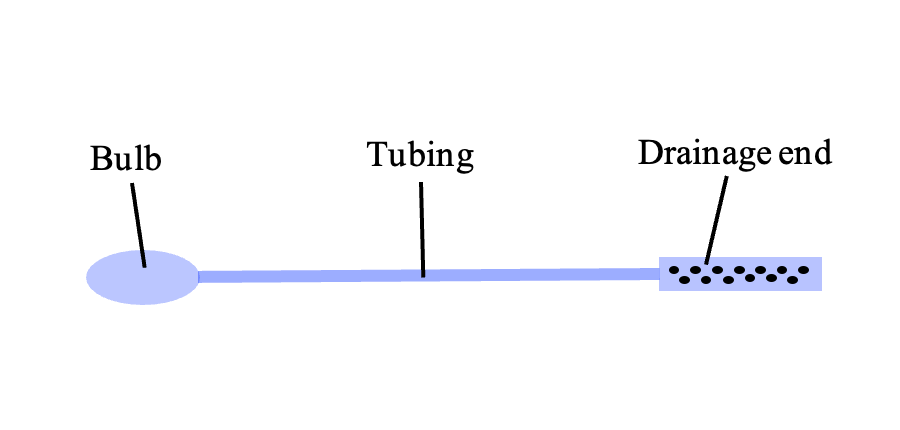
After the excess tissue is removed, the drain is placed in the dependent area (lower abdomen) of the surgical area. The area of removed tissue is diagrammatically illustrated in pink.
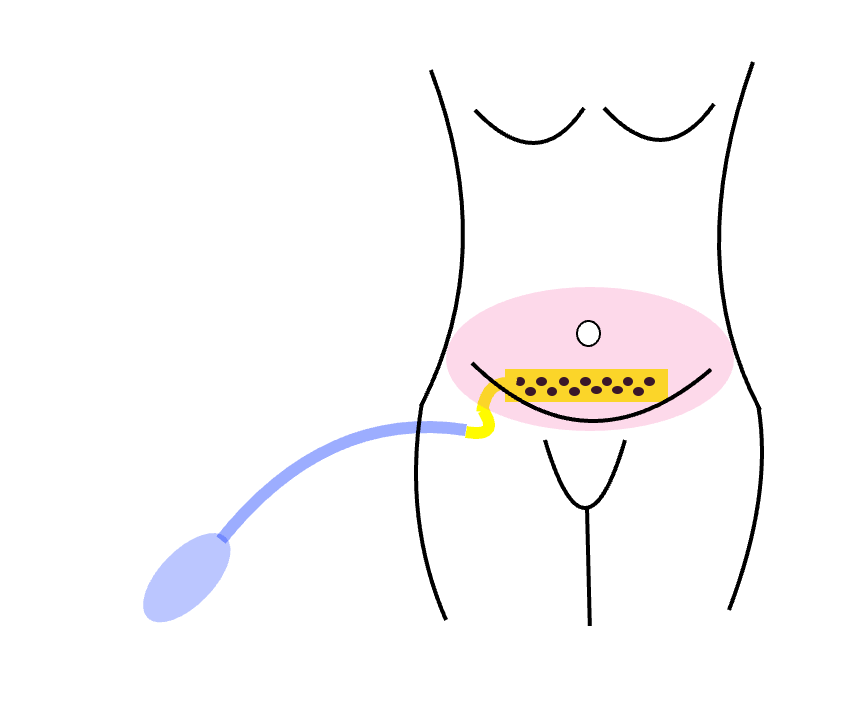
The area is then closed with sutures, leaving the drain on the inside (illustrated in yellow). Placing the drain in the dependent area should cause the drainage to move to the bottom and into the drain.
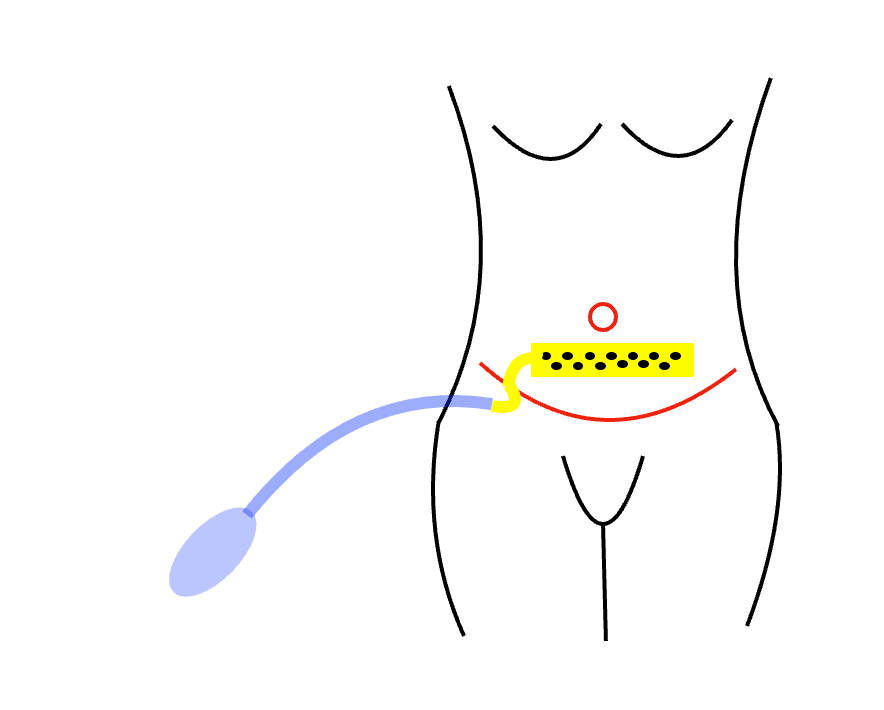
The drainage is then removed by bulb suction. While the drain is in place, the drainage is monitored for color, volume, and consistency, which is helpful in determining the status of the healing process. When the drainage becomes minimal, which usually takes about a week, the drain is removed.
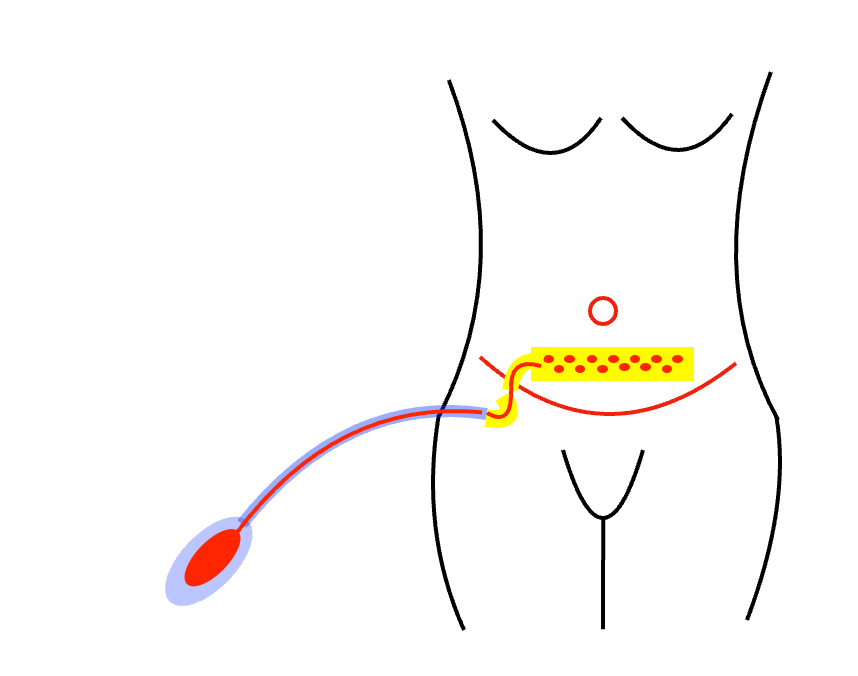
The closed drainage system commonly used with tummy tuck can facilitate the healing process by removing excess drainage from the area of surgery. In addition, the placement of a drain allows the plastic surgeon and the patient to monitor the area of surgery.
To learn more about abdominoplasty, feel free to contact Stephen Herring, MD. A board-certified plastic surgeon with more than 30 years of experience, Dr. Herring is well-known for his ability to create personalized results for each abdominoplasty patient, whether they are local or from out of town. He looks forward to discussing your needs and aesthetic goals during your initial consultation.
Previous Post Next Post